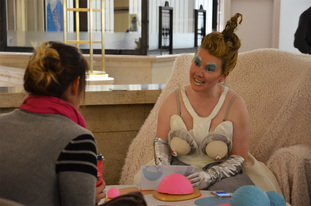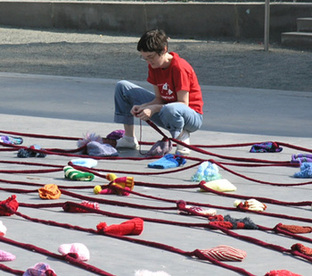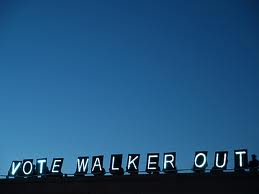- Hannah Brookman
Carron Little
 Why Make Art? For change. “When I was a young, I was very political and did a lot of direct action. At the age of sixteen I became a representative for youth CND in Yorkshire and Humberside, in the north of England. I had a big group of fifty young people. One of the first public performances I did was to organize all of these young people and to go to every main station in each major city in Yorkshire and Humberside, and we staged a nuclear fallout in the stations, so suddenly fifty people would drop to the floor, and people would come with theses radiation bins.” Carron is now using performance to bring awareness to the Chicago public. Her most recent performance took place at Bridgeview Bank for Open House Chicago in October. It was called Unto Each Their Own Safe, and was conducted by Little’s extravagant alter ego, The Queen of Luxuria. “The philosophy of the Queen is to challenge the notions of patriarchal power, hence the celebration of the diamond dust breast plates, I call them gender plates.” On this special day, the Queen, and her lovely assistants were posted up at the bank to play games with the public. “I created this interactive performance where the public went up to these three different stations and either play chess or there was this game, Octagon, based on one of Duchamp’s games, and I created a Jenga/Queen of Luxuria style stacking game.” There was a fourth game, which the Queen herself administered. In this game, the participants would move around ‘gender plates’ and discuss their finances and earnings with the Queen of Luxuria. “If a person was earning $30,000, according to the Queen of Luxuria, the minimum wage should be $80,000, so I would make up the difference. If a woman was sat in front of me I calculated her working life and multiplied that by the money she hadn’t been paid over her lifetime. One woman earned to $30-60,000 bracket. She was unhappy at work so I gave her an extra $80,000 so she could take the year off and find a job that she really wanted to do. And she was happy in life. If somebody was unhappy in life I would give them an extra $20,00 so they could take a holiday or go to the spa every once in a while. People that were retired were getting over a million dollars which wasn’t what I was expecting how much women would get. It really is a profound statement on the inequality of our lives.” | “We as a society still have a long way to go in terms of creating peace and equality in the world and 40% of countries are still in a state of war. I often think about how women are treated all over the world, and our quality of lives and even in the western world, it went up since last year, it was 73 cents to the dollar and now its 77 to the dollar. I’ve been in positions where I’ve had greater qualifications starting out a job but was still paid less than my colleague that had less educational qualifications.” |


 RSS Feed
RSS Feed
